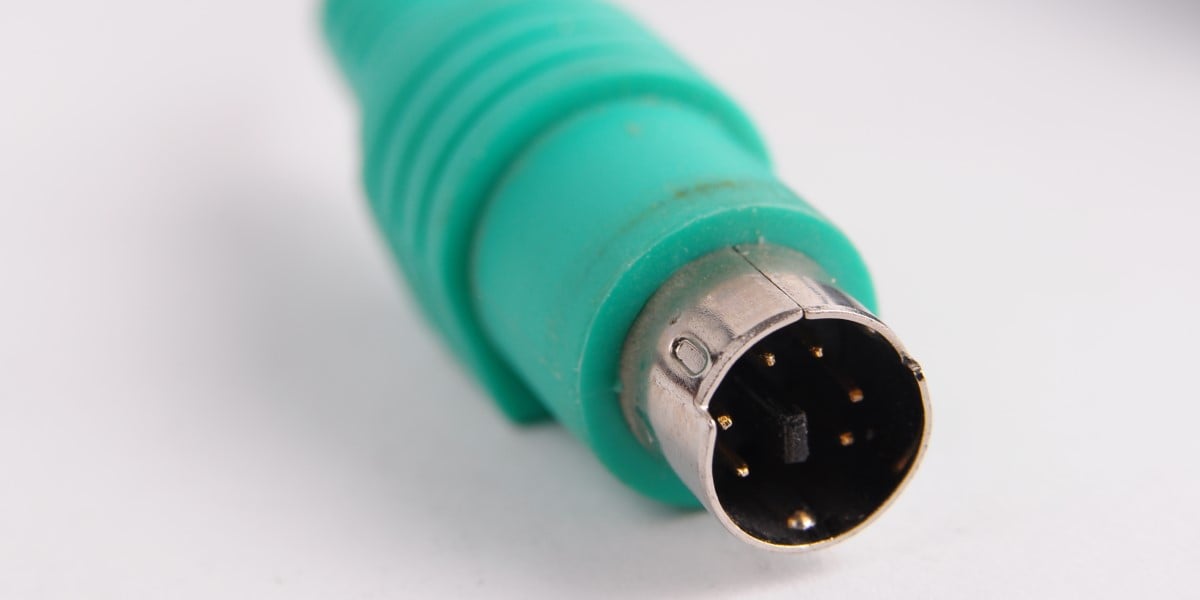The Passive Aggression Of Connecting USB To PS/2

Before Bluetooth and USB, computers had PS/2 ports. Microsoft veteran Raymond Chen took another trip down memory lane this week to explain just how dumb the USB-to-PS/2 adapters that shipped with Microsoft Mouse devices really were.
The Microsoft Mouse first shipped in 1983 with a DB-25 serial connector. This was later updated to a DE-9 serial connector, followed by a version compatible with PS/2 ports, and finally, the USB and wireless incarnations used today.
There was some overlap between the ports available on PCs and the connector required for the Microsoft Mouse. When Microsoft was shipping USB plugs on the cable, the PC might only have PS/2 ports.
For those too young to remember, the PS/2 sockets replaced the chunky DIN connector used for keyboards and the DE-9 serial connector used for mice. The color-coded sockets – purple for keyboards and green for mice – featured on IBM Personal System/2 computers and swiftly spread throughout the PC world.
These connectors are largely obsolete today; they were replaced by USB or wireless technologies. But they do crop up on some security-minded devices where USB ports are either disabled or not present.
- Why did the Windows 95 setup use Windows 3.1?
- Microsoft vet laments a world where even toothbrushes need reboots
- How Windows got to version 3 – an illustrated history
- Veteran Microsoft engineer shares some enterprise support tips
Microsoft's solution for a USB mouse that might need to connect to a PS/2 port was to include an adapter in the box. The problem, according to Chen, is that "USB and PS/2 are completely different protocols that are not compatible in any way. The adapter was purely mechanical (passive). It connected one set of pins to another, but it contained no circuitry. All of the smarts was in the mouse.
"The mouse detected whether it received USB-like signals or PS/2-like signals on the pins and changed its behavior accordingly. The mouse did all the work."
Decades later, the adapters remain available, and it is possible to pick up units that have the smarts built in rather than relying on the device.
Chen's recollections hark back to a simpler time when mixing up the keyboard and mouse cables or bending the odd pin was all a user needed to worry about instead of wondering why a Bluetooth connection has mysteriously developed lag or dropped entirely, or why the operating system is steadfastly ignoring that particular USB device. ®
From Chip War To Cloud War: The Next Frontier In Global Tech Competition
The global chip war, characterized by intense competition among nations and corporations for supremacy in semiconductor ... Read more
The High Stakes Of Tech Regulation: Security Risks And Market Dynamics
The influence of tech giants in the global economy continues to grow, raising crucial questions about how to balance sec... Read more
The Tyranny Of Instagram Interiors: Why It's Time To Break Free From Algorithm-Driven Aesthetics
Instagram has become a dominant force in shaping interior design trends, offering a seemingly endless stream of inspirat... Read more
The Data Crunch In AI: Strategies For Sustainability
Exploring solutions to the imminent exhaustion of internet data for AI training.As the artificial intelligence (AI) indu... Read more
Google Abandons Four-Year Effort To Remove Cookies From Chrome Browser
After four years of dedicated effort, Google has decided to abandon its plan to remove third-party cookies from its Chro... Read more
LinkedIn Embraces AI And Gamification To Drive User Engagement And Revenue
In an effort to tackle slowing revenue growth and enhance user engagement, LinkedIn is turning to artificial intelligenc... Read more

